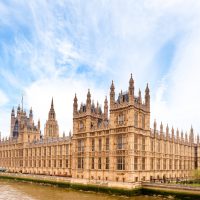
Glen, who is economic secretary to the Treasury, also told the House of Commons that he was in discussions with lenders about bringing back more high loan to value (LTV) mortgages.
And financial secretary to the Treasury Jesse Norman rejected points from opposition MPs who noted analysis from the Institute for Fiscal Studies that the cut would disproportionately benefit landlords and second home buyers.
The comments were made during the second reading of the Stamp Duty Land Tax (Temporary Relief) Bill which will enact the temporary stamp duty cut announced by chancellor Rishi Sunak last week.
Transactions ‘substantially completed’
Craig Mackinlay, Conservative MP for South Thanet, asked Glen if the 31 March would be a cliff edge with transactions needed to be at point of exchange to be eligible for the nil rate of stamp duty.
“Is he not concerned about that cliff edge? For some people, for no reason of their own, late finishing of their property will mean they fall the wrong side, very expensively?” Mackinlay asked.
Glen replied: “We are in a situation where, if the transaction is substantially completed by 31 March, it will be able to qualify for the relief.”
Glen also acknowledged concerns from Conservative MP for Thirsk and Malton Kevin Hollinrake about the limited access to high LTV mortgages at present.
“He is right to say that there is a threat given the changes in the profile of LTV mortgages that are being offered,” Glen said.
“We hope that that will return to more of the normal schedule that we would have seen pre-pandemic.
“We will be actively looking at this, and I am in conversations with the banks and building societies about it,” he added.
First-time buyers losing out
Several MPs also questioned ministers about why the cut was not restricted to people only buying a first home or moving their permanent residence, but also included landlords and people buying additional properties.
Institute for Fiscal Studies analysis following Sunak’s announcement suggested first-time buyers would be left worse off by the move, while industry professionals told Mortgage Solutions it was a “huge opportunity” for landlords to expand their portfolios.
Siobhain McDonagh Labour MP for Mitcham and Morden asked if ministers recognised that it was more than a threat for first-time buyers?
“First-time buyers are queuing online for websites of lenders in an effort to get the small number of five per cent deposit mortgages,” she said.
“Providing more incentive to people who already own their own home or are part of the buy-to-let market effectively crowds out first-time buyers.”
Labour opposition whip Matt Western agreed, noting that there is an issue with the second homes sector.
“Previously, a second homeowner or buy-to-let landlord would have paid an additional three per cent stamp duty surcharge, which would translate into a figure of eight per cent, rather than five per cent,” he said.
“These changes mean that anyone looking to buy a second home at between £250,000 and £500,000 will pay just three per cent.”
He continued: “In the last 12 months, 34 per cent of all purchases were made by second home owners. That has to be a concern, because it affects the market to the detriment of first-time buyers.”
Creating churn
However, Glen argued: “I would look at it in terms of opening up the market, creating more churn and momentum that allows all participants to be able to get on the housing ladder.”
Summing up the debate Norman added: “It is quite untrue to suggest that the measure will disproportionately benefit second home owners.
“Although those buying second homes or buy-to-let properties will benefit, and make a very important economic contribution in so doing, they will continue to pay an additional three per cent on top of the standard stamp duty land tax rates.”















